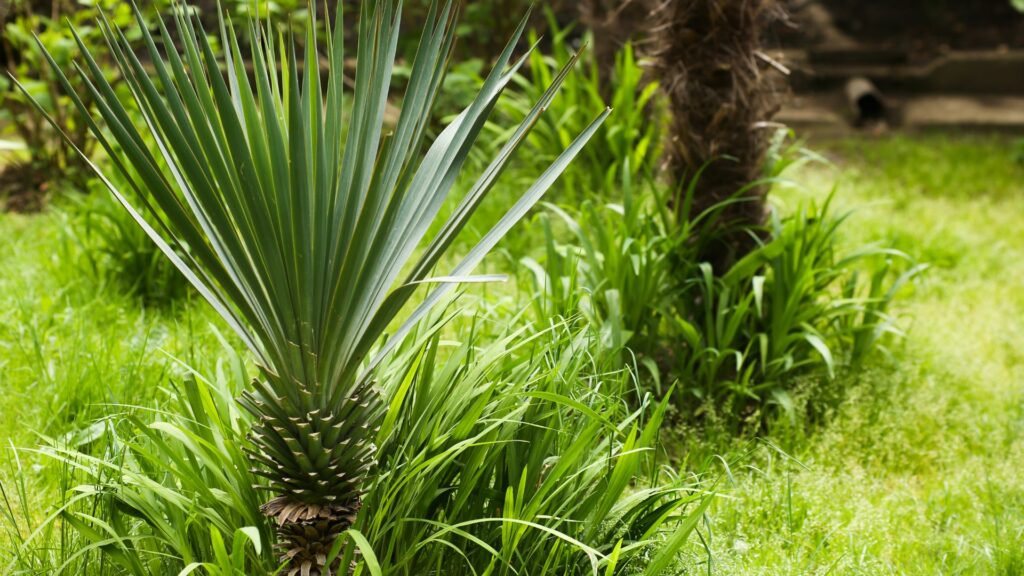Palm trees, originally symbols of magnificent and isolated tropical islands, have become incredibly popular outside their traditional natural habitat, contributing a uniquely exotic touch to countless dull landscapes. The striking allure and sophisticated aesthetic associated with palms have increasingly captivated the imagination of homeowners, yet most cannot sustain their authentic vibrance.
Achieving healthy growth for your palm tree can be overwhelming at first, requiring a minimum of 1.5 inches of external water weekly. Watering your palm tree at the correct time and frequency while evenly applying a suitable, nutrient-rich fertilizer around its intricate root structure is critical.
Ensuring a palm tree thrives, flourishes, and achieves healthy and sustained growth outside its natural tropical climate is exceedingly challenging. However, by knowing how much water the palm requires, how to fertilize it optimally, and when to maintain it, the tree will return the favor by developing into the most impressive natural centerpiece of your landscape.
Do Palm Trees Need a Lot of Water?

It is widely accepted that every magnificent palm tree globally requires a lot of water to survive outside its traditional natural, tropical, and humid climates. Native palms require a similar amount of water, although their remarkable adaptation over countless decades has rendered them water-frugal.
The amount of water a palm tree needs daily, weekly, and monthly is considered substantial by even the most hardened and experienced industry experts. Suppose you attempt to grow or plant a living palm tree locally. In that case, the amount of water and application consistency remain identical, demonstrating the never-ending frustration and challenges for botanists of any skill level worldwide.
Despite millions of palms being directly linked to an excessive water consumption rate by anyone with relevant knowledge and experience, the tree’s incredible adaptation to humid and consistently rainy weather conditions present in their native subtropical and tropical island regions. Interestingly, palm trees initially struggled to cope with the intensity and regularity of yearly tropical downpours.
Are Palm Trees Considered Water Frugal or Wasteful?
To survive, expand, and thrive in those treacherous tropical conditions, palm trees initiated a remarkable climatic adaptation process over many challenging decades.
The long-term transformation proved incredibly successful, resulting in palms being categorized as exceedingly water-frugal, especially when compared to similarly popular trees.
The rarity of palm trees’ water-cautious nature is frequently experienced in direct contrast to their traditional reputation for being incredibly demanding of local water sources and any underlying water tables. This incorrect assumption made it impossible for most other trees to grow or be planted near any strikingly beautiful palm tree outside its natural and traditional habitats.
Despite palms possessing the most desirable water conservation characteristics, the tree’s water requirements cannot be overlooked for a day or two. Palms are temperamental trees that demonstrate signs of avoidable stress; before you realize it, your treasured tree will meet its early end.
While palms are undoubtedly more drought-resistant than originally assumed, their immediate health, longevity, and beauty can rapidly decline if the tree is not constantly provided with enough water.
Palm trees are, comparatively speaking, drought resistant. Although, if you notice the leaf tips starting to brown, its fonds wilting, and a drastically diminished growth rate, the tree’s water supply is inadequate. Increasing its water supply is critical to ensure it remains healthy and vibrant while positively contributing to your landscaping’s aesthetic appeal.
How Much Water Does a Palm Tree Need?
Knowing how much water a specific palm tree needs can be complicated. While a range of factors such as the local climate, type of soil, species, and age influence how much water the tree will require, it is generally accepted that palms, on average, need between 1 and 1.5 inches of water weekly.
It is important to understand that overwatering or underwatering your palm can harm its health, vibrance, and longevity.
Moreover, palms need more water during their growing seasons. Despite their unending allure, palms are notoriously tricky to grow outside their native tropical habitats. For inexperienced growers, we recommend consulting a trusted and experienced industry expert regarding your tree’s nutritional and watering requirements to avoid any unnecessary frustrations in the future.
How Often to Water Palm Trees?
As a rule of thumb, younger palm trees need significantly more water than older ones, with the first two years being vital for their health, longevity, and root system establishment.
For optimal growth and health, you need to implement an individualized watering schedule. Traditionally, younger palm trees should receive a fitting amount of water every two or three days. As the tree ages and matures naturally, the amount and frequency of its watering needs will reduce incrementally.
To obtain the optimal balance, consider these important factors:
- Climate: Palm trees in arid or hot climates require more water than their counterparts in cooler areas. Usually, palms in warmer climates must be watered more frequently, making it more stressful to maintain the trees in arid locations.
- Soil moisture content: It is recommended to thoroughly analyze the soil’s moisture levels periodically, ensuring the first 2 inches of soil remain moist most of the time. Allow the first few inches of soil to dry out slightly between daily watering sessions for optimal tree growth and health, if possible.
- The palm tree’s species: You must know the specific species of your palm tree as their lineage directly impacts their watering requirements. It is essential to thoroughly research your palm tree’s species before implementing a daily schedule to avoid any stress on the tree.
- The tree’s current stage of growth: Palm trees have distinct stages of growth, requiring an individualized and customized watering approach. It is accepted that any young palm tree needs more water than its older counterparts.
Palm trees need a customized and detailed watering schedule, necessitating an incredibly complicated planning process. However, best practice dictates an infrequent yet deep watering approach, instantly encouraging healthy, sustainable, and non-invasive route growth.
How to Fertilize Palm Trees?
Palm trees’ watering and fertilization requirements go hand in hand. An optimal fertilization schedule and approach directly provide sufficient nutrients for robust and vibrant foliage growth.
The best way to effectively and sustainably fertilize palm trees:
- Select the correct fertilizer for your specific palm tree’s needs.
- Ensure you apply the chosen fertilizer at the correct time, which usually occurs during the growing season of spring and early summer.
- Applying the appropriate fertilizer consistently over the developing route areas. If possible, do not distribute any fertilizer to the palm’s trunk to prevent it from being scorched.
- Thoroughly water the areas you fertilize, allowing critical nutrients to reach the underlying soil and roots.
- Never over or under-fertilize your palm tree, as they are incredibly sensitive to nutritional requirements. Follow the fertilizer’s official guidelines as closely as possible.
Final Thoughts
Despite palm trees’ reputation for complexity, intense maintenance, and high water consumption levels, attaining optimal health and enviable vibrance is easily achievable with the correct knowledge and care. By keeping the tropical and rainy climate native to palms in mind during the planning and implementation of a watering schedule, your tree can thrive for many priceless years.

